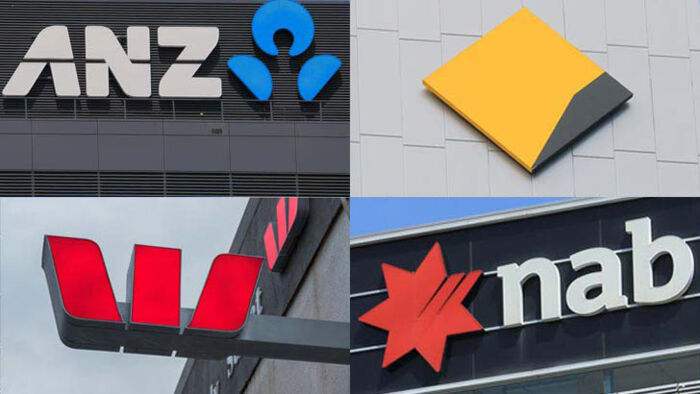Reporting season: What we learnt about the Big Four banks
By Dale Gillham
Australia's big four banks have posted another record profit to March 31, 2023.
Normally this is something investors would applaud, but when it comes to the big four banks, announcing a record profit report has become a little commonplace over the years.
The big question is, do the recent reports actually provide investors certainty of receiving good dividends into the future and allow them to forget the roller coaster ride with these bank share prices in the past decade? Investors have long memories.
Looking at the recent reports, CBA's unaudited profit came in at $2.6 billion for the quarter. ANZ's profit was $3.547 billion, NAB realised $3.967 billion, WBC excited the market with $4.001 billion for the six months to March 31, 2023. So, these reports have all been good news for our financial sector and for investors.
While some investors have been waiting in anticipation, holding onto their bank shares rain, hail, or shine, mainly so they can receive the next big dividend, we need to look at what has driven the result to determine if their decision was wise. Specifically, was it good management on the part of the banks that brought their bumper reports?
Before answering, think back over the past decade. Most agree it has been a rough road for the banks, emerging from a Royal Commission and then later the uncertainty of the COVID pandemic. While some may argue that Banks are now sitting pretty, as they are making easy money from what appears to be a radical policy set by the RBA. But it is not that simple.
Banks did not just sit on their laurels, during the pandemic as bank board members knew they needed to act, especially with interest rates for fixed loans so low at the time. So, they focussed on writing more loans and cutting expenses.
According to data from the Australian Bureau of Statistics, prior to the pandemic the proportion of new fixed rate loans was hovering at around 15%. But this rose strongly during the pandemic, initially to 35% and up to around 45% in 2021. Although this quickly changed as the percentage of fixed rate loans dived to around 5% by 2022. Banks are now making bigger margins from these loans that were on low fixed rates as their fixed terms come to an end.
It is worth considering that at no time in history have we recorded such a huge jump in the cash rate in such a short time. Higher rates have hurt existing borrowers and created uncertainty for those contemplating a property purchase, however, the rise has created a sweet spot for banks. This is important at a time when banks are dealing with increased risk of cyber attacks and this has seen an increase in costs for them.
Recently we have seen the collapse of international banks and the fallout of the crypto crash has hurt investors and we can't assume that Australian banks are immune. This is a crucial point to make about international banks collapsing because we are now more than ever in a global economy and the recent bank rescues have caused investors to be fearful across the world.
What investors need to think about is big US banks and banks in other countries have also posted record first-quarter profits. Governments are still spending, and we saw this in the Budget released only last week here in Australia. If the government is spending up, we know this flows onto the stock market, so we urge investors to remember to think like Warren Buffett and not the herd.
Locally, Australian bank stocks have risen from the lows recorded in the pandemic as follows: ANZ is up 72% to $24.31, CBA has risen 84%, NAB gained 100%, WBC is up 57%. This indicates WBC may have more potential to rise.
Also of interest is CBA whose shares have risen 8% from the high prior to the COVID crash, which means it has only gained 8% in three years. ANZ, NAB and WBC are still trading below their pre-COVID highs, so what does that mean for investors? The analysis indicates further upside is likely for bank shares over the next few years.
While there is some short-term volatility for banks to overcome, these stocks should be high on the list of preferred investments for most medium to long term investors. Banks are also great for new investors wanting to learn.
Our preferred banks are currently Commonwealth Bank (CBA) and Westpac (WBC), however, when banks turn back up to start the next rise it will make sense to hold more than two banks, so be patient and wait for confirmation of the next rise before buying.
Get stories like this in our newsletters.



